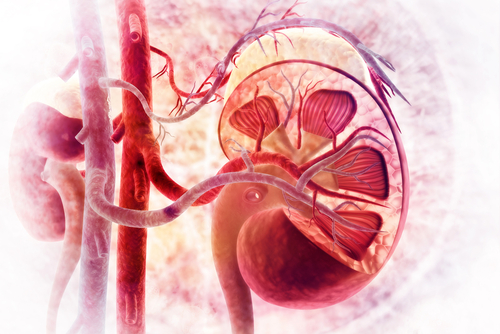Levamisole-laced Cocaine Led to ANCA Vasculitis and Kidney Damage, Case Report Recounts

A patient in New York was diagnosed with ANCA-associated vasculitis and compromised kidney function caused by levamisole-adulterated cocaine, which scientists consider to be a rare occurrence.
The study, “Unusual case of levamisole-induced dual-positive ANCA vasculitis and crescentic glomerulonephritis,” was published in BMJ Case Reports.
Levamisole is an anthelmintic (meaning “destructive to parasitic worms”) drug with immunomodulatory properties. As such, it has been used in the treatment of tumors and other diseases characterized by immune dysfunction, including rheumatoid arthritis and Crohn’s disease.
In 2000, however, levamisole was pulled from the U.S. market because of adverse effects related to its toxicity. Although used legitimately for some uses in veterinary medicine, it is now being used illicitly as a cocaine adulterant, and experts believe it is in most of the cocaine distributed in the United States.
The exact purpose for adding levamisole to cocaine is unknown, but scientists think it furthers cocaine’s stimulant effect.
Complications associated with use of levamisole-adulterated cocaine include low levels of neutrophils (a type of white blood cell), severe reduction in the total amount of white blood cells, joint pain, branching purpuric skin lesions, inflammation of blood vessels walls (vasculitis), and skin necrosis (premature death of skin cells).
However, renal side effects of these two drugs combined are uncommon.
Researchers at Jacobi Medical Center in the Bronx, New York, described the case of a 40-year-old Hispanic man who was admitted to the rheumatology clinic with acute kidney problems. The patient had a history of cocaine addiction and was being treated at that same facility for chronic inflammatory arthritis.
Biochemical testing revealed high serum creatinine levels, red blood cells and protein in the urine. Creatinine is a waste product from normal muscle metabolism. Healthy kidneys remove creatinine from the blood; so, a high concentration of creatinine is indicative of kidney damage.
Kidney tissue analysis showed focal proliferation of cells inside Bowman’s capsule — the initial part of a nephron (the basic structural and functional unit of the kidney that removes waste from the body and produces urine) along with cellular death and mild immune complex deposition, which is a cluster of interlocking proteins and antibodies.
To describe these disease features, doctors use the term “necrotizing crescentic glomerulonephritis,” which is typical of small-vessel vasculitis in the kidney.
The patient also tested positive for proteinase 3, myeloperoxidase, anticardiolipin antibodies and antinuclear antibody, leading to a diagnosis of ANCA vasculitis.
Investigators chose a treatment regimen tailored for ANCA vasculitis, which apart from the patient having to stop using cocaine, included pulse dose steroids followed by maintenance prednisone to reduce inflammation, Rituxan (rituximab) to reduce the number of B-cells (immune cells involved in producing ANCA, the trigger for the immune system to start attacking the blood vessels), and cyclophosphamide to suppress the auto-reactive immune system.
Consequently, the man’s kidney function improved, but did not return to normal.
“We believe that his incomplete improvement was due to the degree of kidney injury on presentation [at the hospital] as well as recidivism with cocaine use,” investigators concluded.






